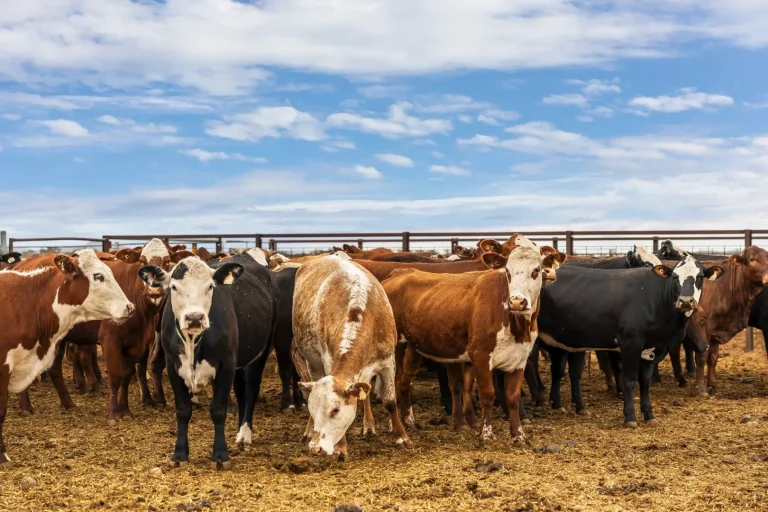Evaluating Market Trends in Australia’s Livestock Farming Sector: Professional Market Analysis Guide
Introduction
What factors drive successful livestock farming investment decisions, and how can systematic market analysis reveal emerging opportunities and risks within Australia’s dynamic pastoral industry? The answer lies in developing sophisticated methodologies for evaluating market trends in Australia’s livestock farming sector that encompass commodity market dynamics, regional performance variations, technology adoption patterns, and global trade relationships that collectively shape investment outcomes and operational strategies.
Australia’s livestock farming sector represents one of the world’s most sophisticated and export-oriented agricultural industries, where market intelligence, trend analysis, and strategic positioning determine investment success and operational profitability. Understanding these complex market dynamics requires professional assessment approaches that integrate multiple data sources and analytical frameworks.
At Agribusiness Horizons, we specialize in comprehensive livestock market analysis that examines all trend indicators from commodity pricing patterns to regional performance metrics and emerging industry developments. Our market intelligence capabilities ensure clients understand evolving conditions while identifying strategic opportunities and risk factors that influence livestock farming investment decisions.
This comprehensive analysis will examine essential methodologies for livestock market trend evaluation, from commodity market assessment and regional analysis to technology impact evaluation and export market monitoring. You’ll gain insights into professional analytical frameworks, data interpretation techniques, and strategic intelligence approaches that successful livestock industry participants employ to navigate market complexities and optimize investment outcomes.
Australian Livestock Market Analysis Environment
Australia’s livestock farming sector operates within sophisticated global markets where domestic production decisions, international trade relationships, and commodity price cycles create complex analytical requirements for understanding market trends and investment implications across diverse pastoral enterprises and regional markets.
Modern livestock market analysis incorporates multiple data streams including commodity prices, export demand patterns, domestic consumption trends, weather influences, and regulatory developments that collectively influence market conditions and investment attractiveness across different livestock sectors and geographic regions.
Regional specialization and production system diversity across Australia create distinct market segments with varying trend patterns, performance characteristics, and investment drivers that require specialized analytical approaches and localized market intelligence for accurate assessment and strategic planning.
Export market orientation of Australian livestock production creates significant international influence on domestic market trends, requiring analysis of global trade relationships, currency fluctuations, and international demand patterns that influence pricing and investment opportunities across livestock farming enterprises.
Technology integration and operational modernization trends increasingly influence market competitiveness and investment attractiveness, requiring assessment of innovation adoption rates, efficiency improvements, and technological advantages that affect long-term market positioning and investment viability.
Professional Framework for Evaluating Market Trends in Australia’s Livestock Farming Sector
Commodity Market Analysis and Price Trend Assessment
Australian livestock market trend analysis begins with comprehensive commodity market assessment that examines pricing patterns, seasonal variations, and cycle dynamics that influence revenue generation and investment returns across different livestock enterprises and production systems.
Beef market analysis considers domestic and export pricing trends, seasonal demand patterns, and competitive positioning factors that influence cattle operation profitability and investment attractiveness across different regions and production scales throughout Australia’s diverse cattle farming areas.
Sheep and wool market evaluation examines fleece quality premiums, meat market demand, and dual-purpose operation optimization that influence investment decisions and operational strategies for sheep farming enterprises across varying climatic conditions and market access scenarios.
Livestock breeding market assessment considers genetic improvement trends, breeding stock valuations, and performance enhancement opportunities that influence long-term investment returns and competitive positioning for livestock operations focused on genetic excellence and performance improvement.
Feed market dynamics and input cost trends significantly influence livestock operation profitability through their impact on operational expenses and margin sustainability, requiring systematic monitoring and analysis for accurate market assessment and operational planning strategies.
Regional Performance and Geographic Variations
Livestock market trend evaluation requires detailed regional analysis that examines climate influences, infrastructure advantages, market access factors, and competitive positioning elements that create distinct investment characteristics and performance patterns across Australia’s diverse pastoral regions.
Queensland livestock markets demonstrate unique characteristics through tropical and subtropical production systems, export infrastructure access, and proximity to Asian markets that create specific trend patterns and investment opportunities for cattle operations and integrated livestock enterprises.
New South Wales pastoral regions offer diverse market conditions from intensive operations near population centers to extensive grazing enterprises in western areas, creating varied trend patterns and investment characteristics that require specialized regional analysis and market intelligence approaches.
Western Australian livestock markets provide opportunities for large-scale operations with substantial land holdings that appeal to investors seeking economies of scale and export market positioning through efficient production systems and strategic location advantages.
South Australian and Victorian livestock regions offer intensive production opportunities and premium market access that create distinct trend patterns and investment characteristics compared to extensive pastoral areas, requiring differentiated analytical approaches and market assessment methodologies.
Export Market Dynamics and International Trade Influences
International market assessment represents critical component of livestock trend analysis, as Australian livestock products compete in global markets where trade relationships, currency fluctuations, and international demand patterns significantly influence domestic market conditions and investment attractiveness.
Asian export market analysis examines demand growth patterns, trade relationship development, and competitive positioning factors that influence Australian livestock export opportunities and pricing premiums for quality products meeting international market requirements and consumer preferences.
Processing industry relationships and value chain integration trends influence market access and pricing opportunities while creating operational advantages and investment attractiveness for properties positioned within established supply chain relationships and quality assurance programs.
Currency impact assessment considers Australian dollar fluctuations and international competitiveness factors that influence export profitability and domestic market positioning for livestock products competing in global markets with varying currency and economic conditions.
Trade policy developments and international agreements increasingly influence market access and competitive positioning, requiring ongoing monitoring and analysis of regulatory changes and trade relationship evolution that affect long-term market opportunities and investment viability.
Technology Adoption and Innovation Impact Analysis
Modern livestock farming trend evaluation incorporates technology adoption patterns and innovation impacts that influence operational efficiency, competitive positioning, and investment attractiveness across different livestock enterprises and production systems throughout Australia’s pastoral regions.
Precision livestock management technology including electronic identification, automated monitoring, and data management systems enhance operational efficiency while providing competitive advantages that influence market positioning and investment returns for sophisticated livestock operations.
Genetic improvement technology and breeding advancement continue creating value enhancement opportunities through livestock quality improvements and productivity gains that influence long-term investment returns and competitive positioning for livestock operations focused on genetic excellence.
Environmental monitoring and sustainability technology enable regulatory compliance and environmental stewardship demonstration that increasingly influences market access and premium pricing opportunities for livestock operations meeting contemporary environmental and social expectations.
Automation and labor efficiency technology reduce operational costs while improving consistency and productivity that enhance competitive positioning and investment attractiveness for livestock operations seeking operational optimization and cost management advantages.
Australian Livestock Market Trend Analysis Framework
| Analysis Component | Key Indicators | Assessment Methods | Strategic Applications |
|---|---|---|---|
| Commodity Pricing | Price cycles and seasonal patterns | Historical analysis and forecasting | Investment timing and planning |
| Regional Performance | Geographic variations and advantages | Comparative regional analysis | Location selection and positioning |
| Export Markets | International demand and trade flows | Global market intelligence | Export strategy development |
| Technology Trends | Innovation adoption and efficiency gains | Technology assessment surveys | Operational modernization planning |
| Production Systems | Efficiency and sustainability metrics | Operational benchmarking | System optimization strategies |
| Investment Flows | Capital allocation and ownership patterns | Market transaction analysis | Investment opportunity identification |
This framework illustrates how pastoral industry market assessment Australia requires systematic evaluation across multiple analytical dimensions that collectively determine market conditions and investment opportunities.
Investment and Capital Flow Analysis
Capital market trends and investment flow patterns provide important indicators of livestock farming sector attractiveness and future development potential, requiring analysis of institutional investment, foreign capital participation, and ownership structure evolution across different livestock enterprises.
Institutional investor participation trends in livestock properties indicate market maturity and investment recognition while creating competition for quality assets that influences pricing and investment strategy development for both institutional and private livestock property investors.
Foreign investment patterns and international capital flows reflect global agricultural investment trends while creating competitive dynamics and ownership structure changes that influence market conditions and investment opportunities across Australian livestock farming regions.
Succession planning trends and generational transfer patterns increasingly influence livestock property availability while creating investment opportunities and market dynamics that require specialized analysis and strategic positioning for optimal acquisition and divestment timing.
Property value trends and capital appreciation patterns provide insights into long-term investment performance while indicating market strength and future potential that support strategic planning and investment decision-making for livestock property investments across diverse regions.
Professional Market Intelligence and Data Interpretation
Data Collection and Analysis Methodologies
Comprehensive livestock market trend evaluation requires systematic data collection from multiple sources including commodity markets, property transactions, production statistics, and industry surveys that provide comprehensive market intelligence for informed decision-making and strategic planning.
Industry benchmark analysis and comparative performance assessment enable objective evaluation of market trends while identifying competitive advantages and positioning opportunities that distinguish superior operations and investment opportunities from market averages and industry standards.
Statistical analysis and trend identification techniques provide objective interpretation of market data while recognizing pattern development and cycle characteristics that influence investment timing and strategic planning for livestock farming enterprises and property investments.
Professional market research and intelligence gathering coordinate multiple information sources while maintaining current knowledge of market developments, regulatory changes, and industry trends that influence investment decisions and operational strategies.
Agribusiness Horizons’ Livestock Market Intelligence Services
Our specialized approach to livestock market analysis combines industry expertise with comprehensive data assessment, providing clients with current intelligence about market trends and strategic positioning opportunities. Evaluating market trends in Australia’s livestock farming sector requires specialized knowledge that we provide through our market intelligence and agricultural property assessment services.
At Agribusiness Horizons, we conduct detailed cattle farming market evaluation methods that examine regional performance variations, commodity market influences, technology adoption patterns, and investment flow trends to provide comprehensive market intelligence tailored to client investment objectives and strategic planning requirements.
Our market analysis services include systematic monitoring of livestock sector trend monitoring approaches that track commodity pricing, export market developments, regional performance indicators, and industry transformation patterns that influence investment decisions and operational strategies.
Through our extensive livestock industry networks, we maintain current intelligence about market developments, property transactions, and industry trends that enhance our analytical capabilities while providing clients with timely information about emerging opportunities and risk factors.
We provide ongoing Australian pastoral market intelligence frameworks analysis and trend monitoring services that help clients understand evolving market conditions while identifying strategic opportunities and risk factors that may affect their livestock farming investments and operational planning.
Our market intelligence services extend beyond analysis to include strategic planning support, investment timing guidance, and opportunity identification assistance that helps clients optimize livestock farming investment decisions while managing market risks and maximizing returns.
Current Market Developments and Future Considerations
Sustainability and Environmental Market Trends
Contemporary livestock farming markets increasingly emphasize environmental sustainability and carbon farming opportunities that create additional value streams while meeting evolving consumer expectations and regulatory requirements for environmentally responsible livestock production systems.
Regenerative agriculture practices and soil health management provide operational benefits while positioning livestock operations for carbon credit markets and environmental service payments that complement traditional livestock production income through diversified revenue streams.
Animal welfare standards and consumer preference evolution continue influencing market access and premium pricing opportunities for livestock operations demonstrating superior animal husbandry practices and welfare standards that meet contemporary consumer expectations and regulatory requirements.
Water resource management and drought resilience planning have become essential considerations for livestock market competitiveness as climate variability influences operational reliability and long-term sustainability of livestock operations across different regions and production systems.
Technology Integration and Market Evolution
Precision livestock management adoption continues accelerating across Australian livestock operations, creating competitive advantages through improved efficiency and data-driven management capabilities that enhance market positioning and investment attractiveness for technologically sophisticated operations.
Supply chain transparency and traceability technology increasingly influence market access and premium pricing opportunities as consumers and processors demand product integrity verification and origin documentation throughout livestock production and processing systems.
Digital marketing platforms and direct sales opportunities enable livestock producers to capture additional value through product differentiation and consumer relationship development that enhance profitability beyond traditional commodity market participation.
Automation technology and labor efficiency improvements provide operational advantages while addressing workforce challenges that affect livestock operation competitiveness and sustainability in evolving agricultural labor markets.
Regional Market Dynamics and Competitive Analysis
Northern Australian livestock markets continue developing through infrastructure investment and market access improvements that create opportunities for large-scale cattle operations and integrated livestock enterprises positioned for export market participation and economies of scale.
Southern intensive livestock regions demonstrate different trend patterns through proximity to population centers and processing facilities that support premium market positioning and value-added production opportunities for livestock operations focused on quality and market differentiation.
Climate adaptation strategies and risk management approaches increasingly differentiate successful livestock operations as variable seasonal conditions require operational flexibility and strategic planning that manages weather risks while maintaining productivity and competitiveness.
Market consolidation trends and industry structure evolution create both challenges and opportunities for livestock operations as processing industry changes influence market access, pricing power, and strategic positioning requirements for competitive participation.
Investment Strategy Development and Market Positioning
Successful livestock farming investment requires strategic positioning that leverages market trend analysis for optimal timing, location selection, and operational strategy development that aligns with evolving market conditions and competitive requirements.
Portfolio diversification strategies across different livestock sectors and geographic regions provide risk management benefits while capturing opportunities from varied market conditions and performance patterns that optimize overall investment returns and market exposure.
Value-added production opportunities and direct marketing initiatives enable livestock operations to capture premium pricing while building competitive differentiation that enhances profitability beyond commodity market participation through strategic market positioning.
Long-term market development and strategic planning consider industry evolution, technology advancement, and market structure changes that influence future competitiveness and investment sustainability for livestock farming enterprises.
Professional Advisory and Strategic Support
Professional livestock market analysis requires specialized expertise in agricultural economics, commodity markets, and industry dynamics that significantly influences analytical accuracy and strategic planning effectiveness for livestock farming investment decisions.
Multi-disciplinary advisory coordination including agricultural economists, market analysts, and livestock specialists ensures comprehensive market assessment while optimizing strategic planning and investment decision-making for livestock property investments and operational development.
Ongoing market monitoring and intelligence services provide continuing support for strategic adaptation and opportunity identification while ensuring access to current market information and professional analysis throughout changing market conditions.
Strategic planning integration considers market trends within broader investment contexts including portfolio optimization, risk management, and long-term wealth creation strategies that maximize livestock farming investment contributions to overall financial objectives.
Conclusion
Professional evaluation of livestock market trends requires comprehensive analytical frameworks that examine commodity dynamics, regional variations, technology impacts, and international influences that collectively shape Australia’s livestock farming sector. Evaluating market trends in Australia’s livestock farming sector provides essential intelligence for successful investment decisions and strategic planning.
Specialized market intelligence and analytical expertise prove invaluable for livestock farming investment success, as comprehensive understanding of market trends, industry dynamics, and strategic positioning factors significantly influences investment outcomes and operational planning effectiveness. Working with experienced agricultural market specialists ensures access to professional analysis and strategic guidance.
Several strategic questions warrant consideration when evaluating livestock market trends: How do current commodity market conditions and export opportunities influence investment timing and regional selection strategies? What technology adoption trends and operational innovations provide competitive advantages and investment enhancement opportunities? How do evolving consumer preferences and regulatory requirements affect long-term market positioning and operational sustainability?
Contact Agribusiness Horizons today to discuss your livestock farming investment objectives and access our specialized expertise in market analysis and agricultural property assessment. Our team combines comprehensive industry knowledge with professional analytical capabilities to help you understand livestock market trends while identifying investment opportunities that align with your strategic objectives and risk management requirements across Australia’s diverse pastoral regions.



